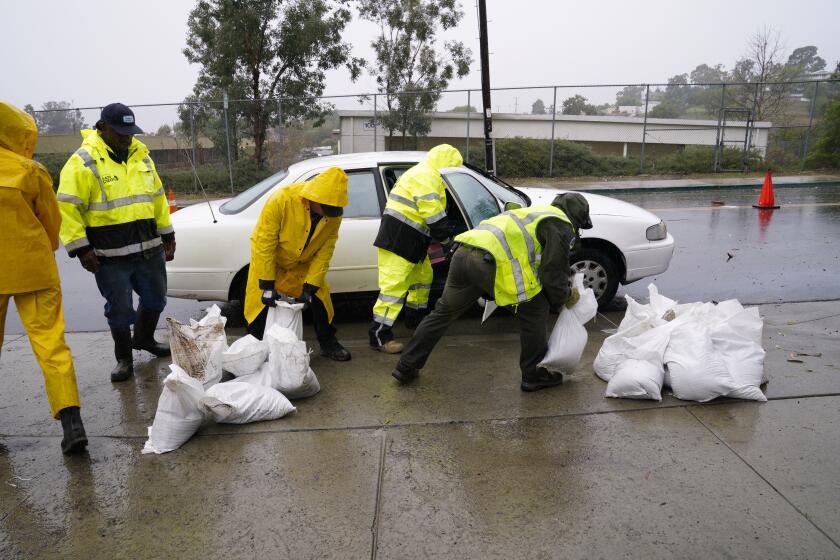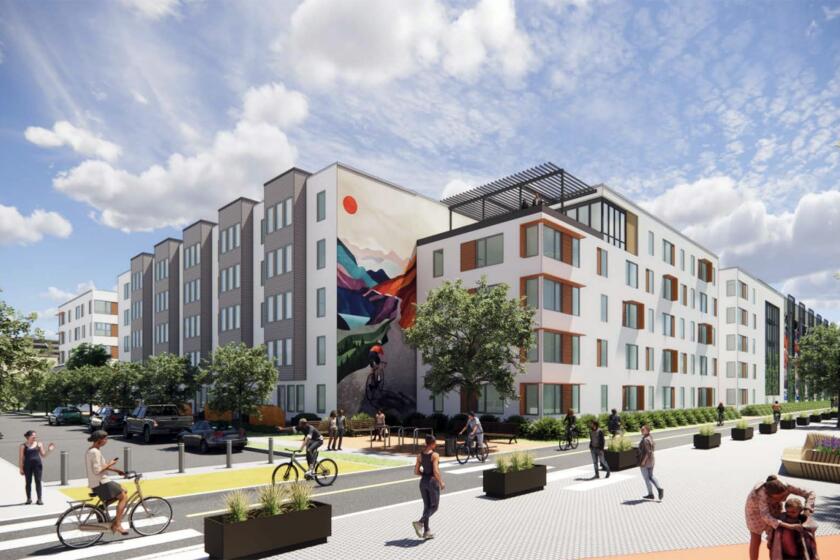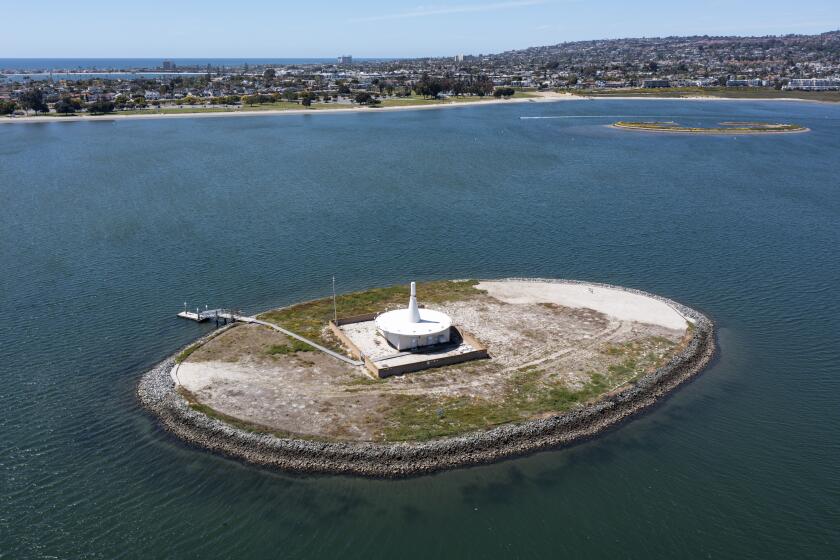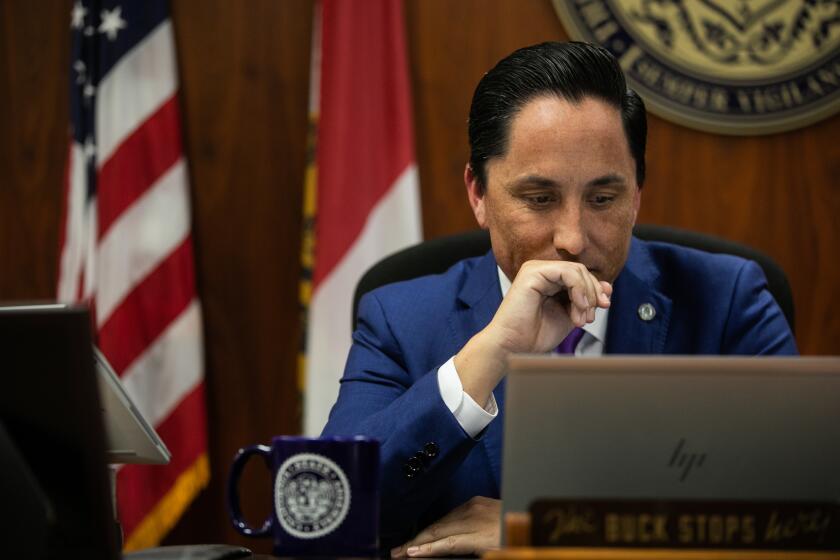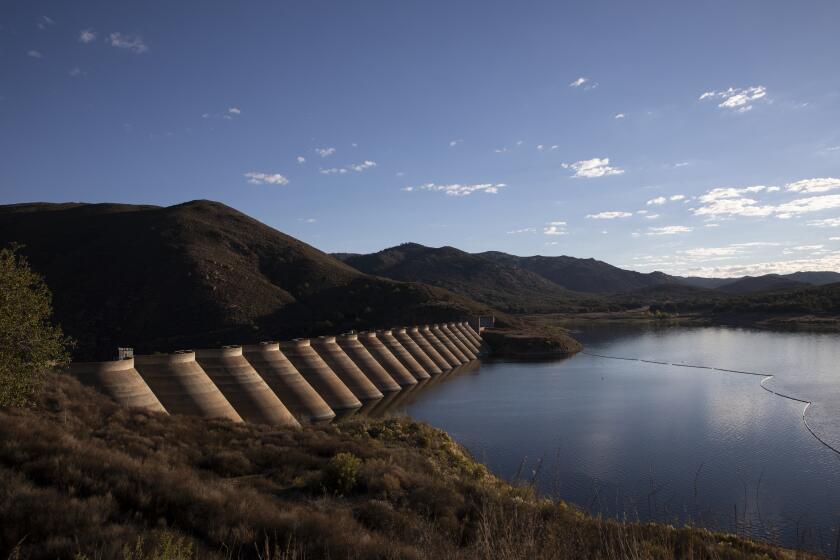Stadium measures have stark differences
Two initiatives on the November ballot could bring a combined convention center annex and Chargers stadium to downtown San Diego, but they differ in several significant ways.
Those differences include their relative complexity, how ambitious they are, whether taxpayers would subsidize the stadium, how much local hotel taxes would rise and the likelihood the project would actually get built.
CHARGERS STADIUM: COMPLETE COVERAGE
Another key difference could be their vulnerability to lawsuits, which may delay construction or end up stymieing the project completely.
Complexity and certainty
Measure C, which the Chargers are promoting, is less complex and appears to be less vulnerable to litigation than Measure D, a proposal known as the Citizens’ Plan that was created by a coalition of community leaders and environmental groups.
Measure C also gives the Chargers more certainty that the higher hotel taxes will be used to construct the combined facility, and allows the project to move forward without the Chargers negotiating a deal with local hotel owners that mostly oppose the project.
Measure D essentially only increases the hotel tax, forcing the team and hoteliers to subsequently work out a financial partnership, and also requiring each to contribute more money than Measure C demands.
One possible negative of Measure C, at least with some voters, is that it would partly subsidize construction of the Chargers stadium with the higher hotel taxes. Measure D expressly prohibits any such subsidy, beyond providing land and some infrastructure.
Another potential issue with Measure C is that it would raise hotel taxes from 12.5 percent to 16.5 percent, which would be among the highest in the nation. Measure D would raise the rate to 15.5 percent, making it less of a threat to adversely impact local tourism.
A holistic approach
Measure D’s greatest strength could be its ambitious and holistic approach to solving San Diego’s largest challenges without getting in the way of a Chargers downtown stadium.
If the Chargers and hoteliers work out a deal to build a combined facility with the higher hotel taxes, Measure D includes numerous taxpayer and environmental protections that many consider appealing.
Chief among those is requiring that the Qualcomm Stadium site in Mission Valley that the Chargers would abandon becomes a park, a San Diego River interpretive center and a higher education annex for San Diego State and possibly UC San Diego.
That would prevent the site from being developed with any of the proposals of the past for intense projects including office buildings, condos or retail shops.
“On all the big-ticket items the city has tried to accomplish in the last 20 years, the Citizens’ Plan makes sure that the public is taken care of first,” said attorney Cory Briggs, its chief author. “We’re making sure the rules of the game are fair.”
Briggs contends Measure D allows the Chargers and hotel owners to mutually fulfill their business goals while getting roughly 80 percent as good of a deal as they would wish for.
“The hoteliers and the Chargers have to sit down at the negotiating table and work it out,” Briggs said. “We make them work it out because they are the beneficiaries. If nothing gets done and the money just goes into the general fund for public safety and other city expenses, the only people who suffer are the private special interests.”
Because the hoteliers and Chargers would be responsible for building the project themselves under Measure D, with the hoteliers getting partly reimbursed with tax credits, there is no chance the city would have to contribute money from its general fund operating budget to cover construction or operating expenses.
RELATED: Chargers dispute risks of stadium measure
The Chargers say the city also wouldn’t have to contribute general fund money under Measure C. But multiple recent studies, including one last week from the city’s Independent Budget Analyst, say that’s not a guarantee.
Too complex?
Ironically, Measure D’s holistic approach might also be its greatest weakness. Because it contains so many elements, it appears to be more vulnerable to lawsuits.
“The more elements you have that might be subject to risk, the higher the level of scrutiny and litigation that may be raised,” said Fred Maas, a spokesman for the Chargers. “So they are probably at higher risk just by virtue of the number of items they are trying to address.”
And because Measure D includes a clause stipulating that all elements of it are null if any element gets eliminated, the Chargers and hoteliers might have to wait several years — until all litigation on any portion of Measure D is settled — to know if they can move forward.
“That’s problematic for us in many respects,” said Maas. “It’s this novel sort of Robin Hood, all-for-one and one-for-all approach. We respect all the different objectives they were trying to accomplish, but as good as their lawyers are, nobody is perfect.”
Maas said that’s one reason the Chargers chose this spring to pursue their own initiative, now known as Measure C, instead of trying to join with Briggs on a combined ballot measure.
“We just decided this is the soundest, clearest and intellectually simplest way to go forward,” he said. “We are laser-focused on creating a simple concept to keep the Chargers in San Diego and build a multi-use facility downtown that relies on visitors and out-of-towners to pay for it — very simple and not complicated.”
Measure D’s complexity has also made it confusing to the public and allowed critics to bash it without attacking its substance.
City Attorney Jan Goldsmith sharply criticized Measure D in April as especially vulnerable to litigation, and other critics have taken similar approaches.
RELATED: Goldsmith pans Citizens’ Plan
“Our opponents said let’s get out there and tell the reporters it’s legally suspect and too complex,” said Steve Peace, a senior adviser for JMI Realty who helped craft Measure D. “They do that because they can’t argue the facts.”
Briggs said Goldsmith’s legal concerns, such as the measure violating California’s requirement that initiatives focus on a single subject, are also incorrect.
“The questions, which are feeble to begin with, all have answers and the answers are all clear,” Briggs said.
On the single subject concern, Briggs contends Measure D meets that requirement because it focuses, while somewhat broadly, on proper management of the city’s tourism-related assets.
While Briggs and Peace concede Measure D is complex, they said that’s with good reason and that each of Measure D’s elements is highly popular with voters individually.
“Anything substantive takes longer to describe,” said Peace. “This is a comprehensive tourism plan, while the Chargers proposal is much more narrowly focused on their interests.”
Potential outcomes
If voters approve both measures, the one that received higher support at the polls will prevail.
Measure C needs approval from two-thirds of voters. Goldsmith, the city attorney, says Measure D also needs two-thirds approval, but Briggs contends only approval from a simple majority is needed.
If Measure D gets support from somewhere between 50 percent and two-thirds of voters, that question figures to be the first courtroom showdown over the measure.
The odds seem stacked against either measure getting approved by two-thirds of voters. A SurveyUSA poll conducted late last week of 678 likely voters showed 39 percent support for Measure C and 29 percent for Measure D. But 25 percent of those polled were undecided Measure C, with 44 percent undecided about Measure D.
If Measure D passes and Measure C fails, the Chargers would face a much more complicated and potentially expensive path toward getting the downtown convention center annex and stadium they want.
Some have said the team could quickly try for a special election early next year to force hoteliers to spend some of the higher hotel taxes under Measure D on the project. But the Chargers contribution would rise an estimated $100 million to $200 million beyond the $650 million they would contribute under Measure C.
And without a special election forcing their hands, it seems highly unlikely the hoteliers would move forward on a convention center annex. They’ve been nearly unanimously opposed to an annex, preferring instead to continue pursuing a contiguous convention center expansion on the waterfront that was blocked in court two years ago.
They contend those looking to hold conventions in San Diego don’t find an annex appealing.
The Chargers and supporters of Measure D say the proposed annex, which would essentially require the convention center to make a left turn toward Petco Park instead of being extended in a straight line, would bolster downtown and be highly appealing to those booking convention space.
The city built a $27 million bridge in 2011 over Harbor Drive aiming to connect the convention center better with the Gaslamp Quarter and other parts of downtown.
Peace said voters have three choices in November: send the Chargers to Los Angeles by rejecting both measures, give the Chargers what they want by approving Measure C only, or send the Chargers back to the negotiating table by approving Measure D only.
Maas, the Chargers spokesman, disagreed.
“I would say the voters have one choice: they can pass Measure C and approve a plan that provides a multi-use convention center and stadium — not on the backs of San Diegans — or not,” he said.

